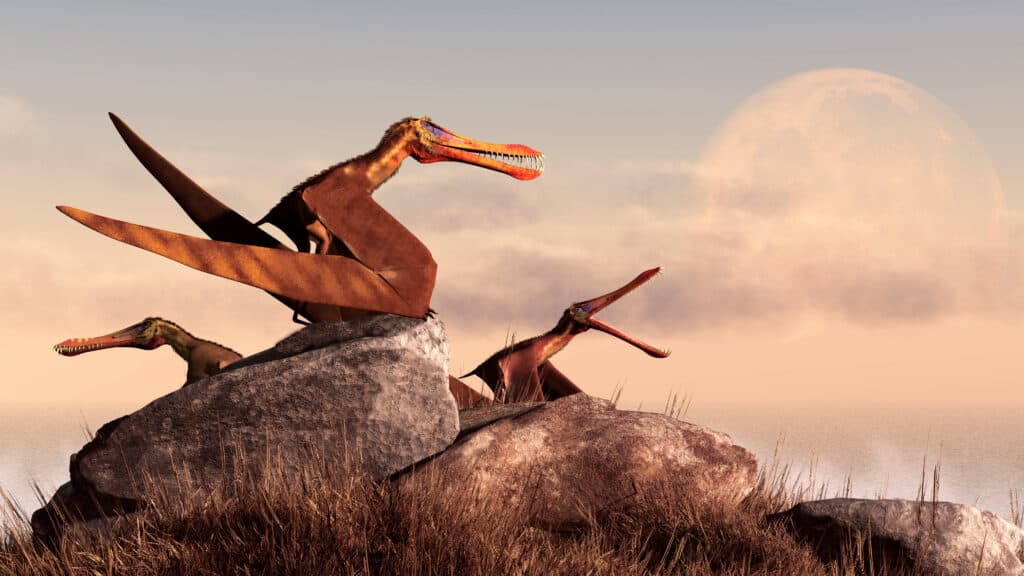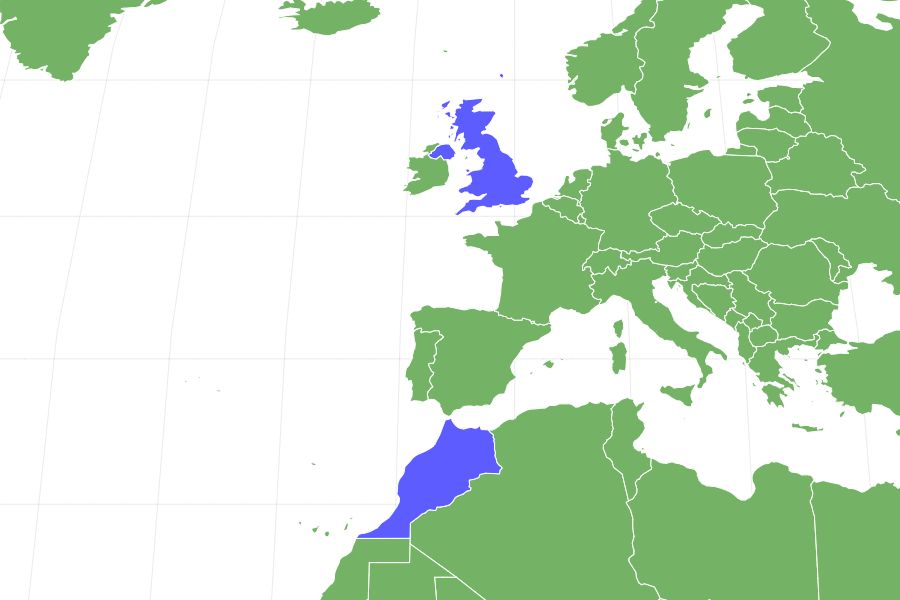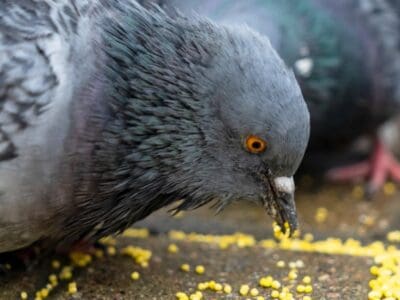Ornithocheirus
Ornithocheirus simus
Scientists once considered the Ornithocheirus an ancestor to modern birds
Advertisement
Ornithocheirus Scientific Classification
- Kingdom
- Animalia
- Phylum
- Chordata
- Order
- Pterosauria
- Family
- Ornithocheiridae
- Genus
- Ornithocheirus
- Scientific Name
- Ornithocheirus simus
Read our Complete Guide to Classification of Animals.
Ornithocheirus Conservation Status
Ornithocheirus Facts
- Prey
- Fish
- Main Prey
- Fish
- Fun Fact
- Scientists once considered the Ornithocheirus an ancestor to modern birds
- Most Distinctive Feature
- It had a narrow jaw with a snout at the end
- Distinctive Feature
- Bird-like hands
- Wingspan
- 16–20 feet
- Habitat
- Ocean coasts, grass plains, forests, and mountains
- Diet
- Carnivore
- Favorite Food
- Fish
- Type
- Extinct flying reptile
- Special Features
- They had narrow teeth-filled jaw with needle-sharp teeth for catching fish
- Number Of Species
- 1
- Location
- UK, Brazil and Morocco
View all of the Ornithocheirus images!
The Ornithocheirus was a pterosaur (flying reptile) that lived during the Albian Stage of the Early Cretaceous Period, about 110 million years ago. Fossils of the Ornithocheirus have been found in the United Kingdom and Morocco. The Ornithocheirus was a flying predator. It was a piscivore, which means it hunted and primarily ate fish. It had wings similar in size to that of an albatross or eagle. Based on recent estimates, the Ornithocheirus was a mid-sized pterosaur with a wingspan of about 20 feet. The lack of a well-preserved fossil has made it difficult to classify and describe this reptile accurately.
Description and Size

The only known remains of this reptile is a fragmentary jaw bone. The jaw tip had a convex crest on the snout similar to that of other pterosaurs.
©Daniel Eskridge/Shutterstock.com
The Ornithocheirus is a genus of flying reptiles from the Early Cretaceous Period. It lived 110 million years ago in present-day Europe, South America, and possibly Africa. The name “Ornithocheirus” means “bird hand” in Greek. Harry Seeley assigned the name in 1870 because he assumed Ornithocheirus was a direct ancestor of present-day birds. Only one species—Ornithocheirus simus—has been identified and validated so far.
The only known remains of this reptile is a fragmentary jaw bone. The jaw tip had a convex crest on the snout similar to that of other pterosaurs. Ornithocheirus is closely related to Coloborhynchus and Tropeognathus. Both of these flying reptiles also had a distinct keeled crest like this, with visibly expanded rosettes of teeth. However, Ornithocheirus had a narrower jaw.
The Ornithocheirus teeth had a vertical orientation instead of an outward-pointing angle. This type of dentition would favor a piscivorous diet. The Ornithocheirus had a developed neck to support its bony beak.
Ornithocheirus was one of the largest flying reptiles, with an earlier estimated wingspan of 40 feet. However, recent studies have necessitated a review of this reptile’s size. It probably had a wingspan of about 15 to 20 feet and a weight of about 50 to 99 pounds, which means it was a mid-sized pterosaur. The largest member of that family is the Tropeognathus, with a wingspan of about 27 feet.
Evolution and History
When this reptile was discovered in the early 19th century, Harry Seeley, who named it officially, gave it the name “bird hand” because he thought it was an ancestor to modern birds. However, this has since been disproved.
Ornithocheirus and other flying reptiles did not evolve into birds. Instead, birds are descendants of small theropod dinosaurs that evolved multiple times during the Mesozoic Era.
Paleontologists believed Ornithocheirus themselves evolved from a non-dinosaur reptile. However, there isn’t enough evidence to identify this single ancient reptile from which pterosaurs evolved.
Ornithocheirus belongs to a group of pterodactyloid pterosaurs characterized by their larger wings and shorter tails compared to older relatives. This group evolved in the Middle Cretaceous and lived till the end of the period.
Diet — What Did Ornithocheirus Eat?
The Ornithocheirus was a flesh-eater. More specifically, it was a piscivore. This means its diet primarily consisted of fish. The Ornithocheirus’s long, slender and pointy teeth would have supported an active fish and squid diet.
The Ornithocheirus lived near water and caught fish by dipping their long beak swiftly into the water. The Ornithocheirus also had a sharp claw which it would have used to pick its prey while gliding over the water.
Habitat — When and Where It Lived
Fossils of the Ornithocheirus have been found in Early Cretaceous deposits that date back to about 110 million years ago. The fragmentary nature of this reptile’s fossil has made it difficult to truly characterize its habitat. However, it is possible to make inferences from the animal’s diet. As a piscivore, the Ornithocheirus probably lived close to water bodies where food would have been abundant. It most likely lived on the shores of Western Europe and South America in grass plains, forests, or mountainous areas.
Ornithocheirus — Threats and Predators
There were no known threats or predators to the Ornithocheirus. During the Cretaceous Period, the largest flying animals were the pterosaurs. Although they lived alongside dinosaurs, and some dinosaurs may have hunted them, their ability to fly would have made it easier to avoid predators.
Discoveries and Fossils
Many pterosaur fossils were preserved in Early Cretaceous rocks in the Cambridge Greensands. However, these fossils were in poor condition because they were decomposed before they were fossilized. This has made studying and classifying them rather difficult for scientists. Many of the specimens found in England back in the 19th century were simply assigned to the Pterodactylus genus.
Harry Seeley, a young researcher at the time, was given the responsibility of bringing order to some of the pterosaur fossils at the Sedgwick Museum in Cambridge. He identified some of the bones from the Cambridge Greensands as a new genus. He gave the genus the name Ornithocheirus which in Greek, means “bird hand,” because he believed the fossils he was looking at were ancestors of modern birds. Seeley identified 28 separate species in the genus.
Richard Owen, one of the leading British paleontologists, disagreed with Seeley’s findings which he published in 1879, beginning with the name. Owen created two new genera—Coloborhynchus and Criorhynchus—in 1874 and reassigned the specimens to them. Coloborhynchus translates to “maimed beak,” while Criorhynchus means “ram beak.”
In 1888, a different scientist, Edward Newton, identified and named several other species, grouping them into the Ornithocheirus genus. In the 20th century, many scientists attempted to bring order and structure to the excessive number of species in the genus.
Fortunately, many better-preserved fossils turned up in Brazil. They were about the same age as the fossils from England but were initially assigned to new genera, such as Anhanguera. Due to the initial confusion with the naming and identification of this genus, up to 40 species have been identified in the Ornithocheirus genus. By 2013, scientists were able to clear up the confusion with the naming system, and only one valid species, Ornithocheirus simus, was left in the genus.
Extinction — When Did Ornithocheirus Die Out?
Pterosaur species in the genus Ornithocheirus went extinct about 80 million years ago. Scientists are not exactly sure of the reason for their extinction or whether or not they all disappeared at this time. Even if they did live beyond this period, all the pterosaurs disappeared along with the dinosaur during the mass extinction that occurred at the end of the Cretaceous about 66 million years ago.
Similar Animals to the Ornithocheirus
Similar animals to the Ornithocheirus include:
- Tropeognathus — The huge pterosaurs known as Tropeognathus lived in South America during the last stages of the Early Cretaceous Period. The Tropeognathus’s name means “keel jaw,” a reference to the prominent convex crests on its snout. Tropeognathus is the largest pterosaur ever found in Southern Hemisphere.
- Coloborhynchus — Coloborhynchus was a pterosaur that belonged to the same family as the Ornithocheirus. It was also a piscivore, and both animals lived around the same time as well. Coloborhynchus was once considered the largest-toothed pterosaur ever found.
- Pterodactylus — Pterodactylus was the first pterosaur identified as a reptile. The animal lived during the Jurassic Period and had a relatively small size compared to pterosaurs that lived later, such as the Ornithocheirus.
Related Animals
View all 66 animals that start with OOrnithocheirus FAQs (Frequently Asked Questions)
When was the Onithocheirus alive?
The Onithocheirus was alive during the early Cretaceous Period, about 110 million years ago. It probably went extinct about 80 million years ago.
How big was the Onithocheirus?
Ornithocheirus had a wingspan of 16 to 20 feet and a weight of about 50 to 100 pounds. Although it isn’t the largest pterosaur ever, it is still one of the largest. This flying reptile had a body length of about 10 feet and was up to 4 feet in height.
Is Ornithocheirus bigger than Quetzalcoatlus?
Ornithocheirus was a mid-sized pterosaur compared to much bigger flying reptiles like the Quetzalcoatlus. While the Ornithocheirus had a wingspan of about 16 to 20 feet, Quetzalcoatlus had a wingspan of up to 32 feet.
Thank you for reading! Have some feedback for us? Contact the AZ Animals editorial team.
Sources
- National Geographic, Available here: https://www.nationalgeographic.com/science/article/pterosaurs
- Wikipedia, Available here: https://en.wikipedia.org/wiki/Ornithocheirus
- Dinosaur Pictures, Available here: https://dinosaurpictures.org/Ornithocheirus-pictures
- Mindat.org, Available here: https://www.mindat.org/taxon-4818486.html


















